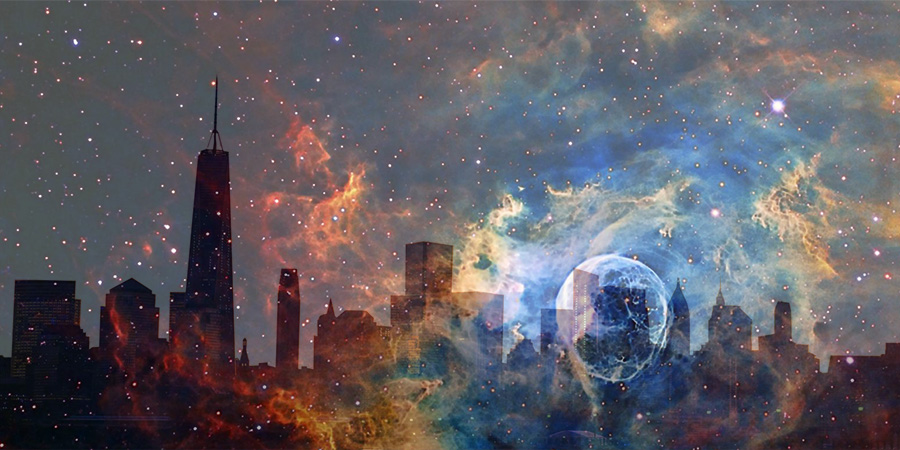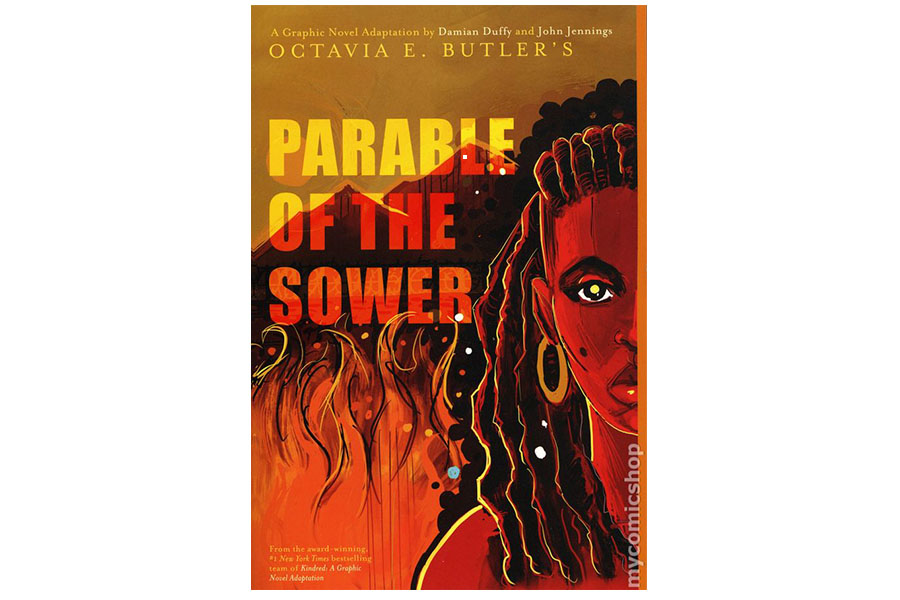
I read my first Octavia Butler novel during the 2019 winter holidays. Awestruck, over the next two weeks I devoured every book she wrote, and concluded with what would become my favorite, Parable of the Sower. It resonated with me in part because of my identity and past experiences, along with having recently moved to the West Coast—Parable tells the story of Lauren, a multi-racial teenage girl living a semi-protected life within a dystopian future California. In the novel, she is forced to navigate incredible upheaval, loss and mayhem, and yet manages to build community and connection; a world of her own making.
In her version of California, superstore security guards carry weapons, the distance between the haves and have-nots expands daily and the world is ravaged by a range of environmental issues from drought to wildfires to food insecurity.
Published in 1993, Parable of the Sower’s opening page is set on July 20, 2024. As we quickly approach that day, we can see the countless ways in which Butler’s incredible imagination has quickly become the reality many of us are living in.
Several months after finishing this book, COVID took the world, and lockdowns fell into place. Much like in the novel, the experiences we each had were vastly different. Our world began to reflect Parable’s social structures, where some were able to lock themselves off with family and friends and enough supplies to last a year, while others were forced to put themselves in daily danger to ensure the rest of us could all still eat. Social gaps were further exacerbated by crises of housing, employment and mental health, along with their related reverberations.
And yet glimmers of hope could be seen.
In the strength found in strangers on social media support groups, through acts of unannounced neighborly kindness, and a reemerging understanding of collective purpose. And excitingly, a lack of travel and noise soothed the environment: air pollution and greenhouse gas emissions went down significantly, and wild animals felt safe to venture out of hiding. For the first time in over two centuries, our earth had a chance to breathe.
As a Canadian in America, I’ve been continually stunned by the challenges the world’s richest nation continues to face. Climate change deniers in government, who still refuse to understand, relaxing regulations when the opposite is needed. Communities are still targeted by extraction-focused interests—think oil drilling, mining, fracking—that erode the structure of their ecosystems, both environmental and social. Low-wage workers are expected to navigate untenable working conditions including extreme heat and worsening environmental hazards. Agricultural workers must navigate the job loss and deepening insecurity of rapidly changing seasons without an adequate social safety net or accessible resources. The climate crisis will continue to disproportionately impact the poor and marginalized.
In August 2020, I ordered the recently released graphic novel adaptation of Parable and it felt fitting to purchase it from Reparations Club, a Black woman-owned bookstore and creative space in Los Angeles. A few weeks later, California’s largest wildfire season in modern history turned the sky orange, the same shade as the cover of the book.


What can we define as beautiful in the uncertainty and fear of our times?
That orange sky was surreal. Dangerous and foreboding, but it was also magnificent. We’ve warped even nature’s beauty against us.
Cryptocurrency, ultra-fast fashion, mega factory farming—are they worth it? Did anyone guess that we’d be willing to pay so high a price for whatever whim we may want? As technology—AI in particular—progresses toward possibilities of mitigating some of the worst the climate crisis will bring, we must ensure that it isn’t used as an excuse to maintain our status quo, to give ourselves permission to continue on as we so far have.
One of our species’ most detrimental faults has been our willingness to blindly embrace novelty, without consideration of the cost charged in return or the new path we had agreed to. Capitalistic instincts that only concern themselves with economic upside have always been foolish, but to not consider health, equity, and sustainability (among other values) has now become existential.
Fortunately, these errant decisions do not need to be irreversible. Frameworks such as the degrowth movement may be models for how we find our way through—their central tenets of reducing energy and resource consumption while promoting the human- and earth-positive outputs of our systems will be key. These changes will need to be global, but they are possible.
Glimmers of hope can be seen once again. Positive progress is being made. Of course, not by the monied conglomerates or self-interested systems that brought us here, but by grassroots organizations, who are achieving large-scale impact. The Sunrise Movement, the Landless Workers’ Movement [Portuguese], the Women’s Earth and Climate Action Network, The Green Belt Movement, Fridays for Future, the Alliance for Food Sovereignty in Africa. Happily, the list goes on.
The diversity represented within these initiatives is not a coincidence.
Our interconnectedness is key not only to our survival but to our ability to create lives where both we and the earth can thrive. Working to form and nurture truly diverse coalitions, with collaborators from a wide range of industries, belief systems and cultural contexts, will be imperative to making change across the myriad intertwined issues that accelerate climate collapse and degrade the quality of our interactions as humans.
The approaching anniversary of Parable of the Sower’s opening page is a chance to embrace the protagonist’s vision: a community of optimists and believers willing to bring us through the danger of the world that humanity has created. If we dream beyond the bounds of what is accepted, if we imagine into the collective, we have a chance of finding a future that is no longer guided by extraction and conflict, but instead by care and compassion.
Mica Le John is a builder, educator, and technologist whose work uses an intersectional lens to explore the relationship between technology and identity. She has spent the last 7 years working with youth to explore self-expression and creativity as the co-founder of venture-backed tech startups, the former Director of Education at a NYC arts organization, among other initiatives. She oversees Special Projects at Black Girls Code, advises inclusion-oriented startups focused on Gen Z, and can usually be found buying more books than there’s time to read.
